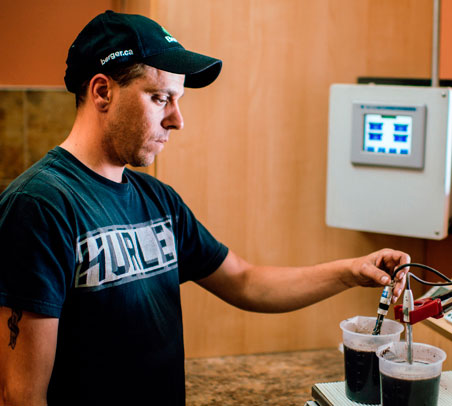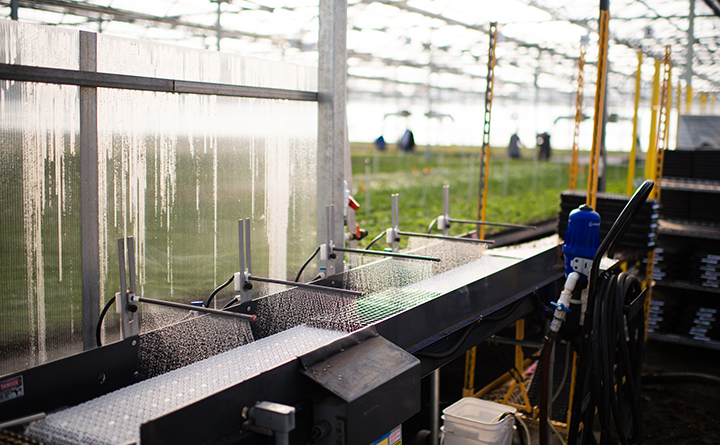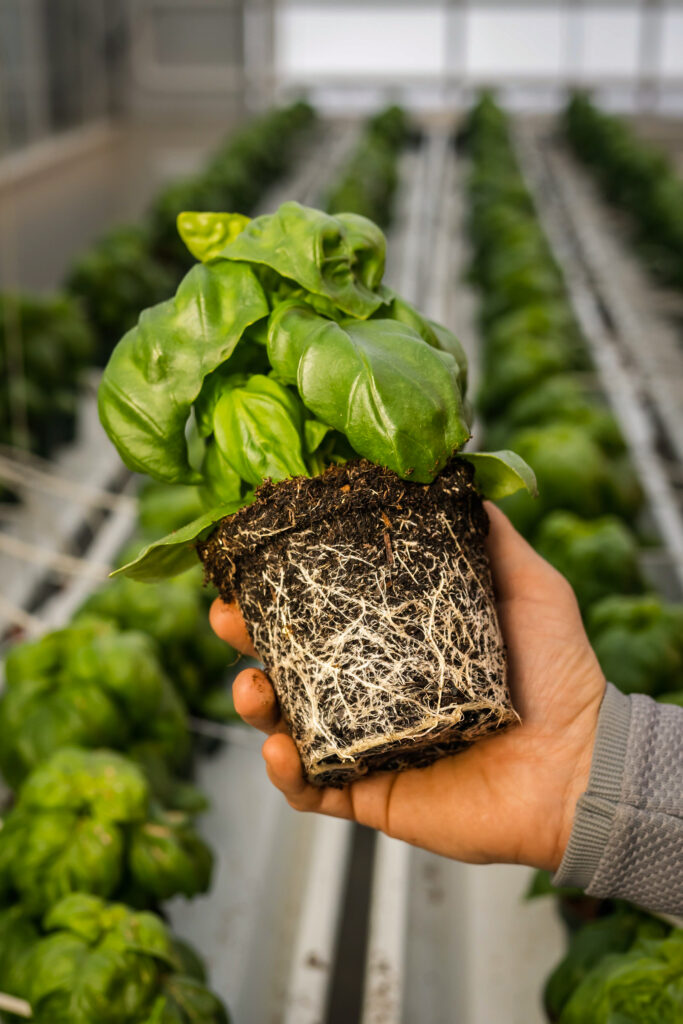Equipment Validation
by Brian Cantin, Senior Grower Advisor
Whether it is pH and salts meters, environment control equipment, new fertilizer injectors and/or equipment for disease and insect management, these tools need to be understood and validated if we are to optimize their handling and get the most bang for your buck. Trade magazines, trade shows, conferences and extension personnel can provide us with valuable information encompassing all facets of the greenhouse industry. However, as growers, it is our responsibility to understand and maintain the equipment we use for our operation.
Validation no1
E.C. and pH Meters
In crop production, understanding and managing substrate pH and electrical conductivity (E.C.) requirements should be a top priority. There is quite a selection of bench top and portable pH and E.C. meters that are available on the market. The operational information can help you select the meter which best fits your needs.

Meter and electrode care is extremely important and vital to the exactitude of the readings in the extraction solution you have prepared. The probes used to measure pH (glass electrode filled with a salt solution) must be stored in the storage solution recommended by the manufacturer! E.C. or salt levels are typically measured by a probe with two metal or graphite prongs through which an electric current passes. These probes are sensitive and need to be cleaned and calibrated on a regular basis. It is not advisable to store the meters in the immediate greenhouse growing area where they are exposed to temperature and humidity extremes. Check the expiry dates of your calibration solutions and store them at room temperature out of the sunlight. The meters and probes mentioned above are designed to measure liquid solutions derived from the extraction technique of your choice.
Before I move onto environmental control equipment, it is important to briefly discuss soil extraction methods. Growers have four methods to choose from i.e. Spurway method (2:1), PourThru technique, Paste saturation (SME) and the bench press method. It is important to know each method’s limitations and follow extraction preparations to a tee. I have encountered modified versions of all the extraction methods which give unreliable results that can definitely produce misleading interpretations. One also has to remember to relate and compare readings of each method based on the media to water dilution factor. Tables for each method as well as comparative charts are readily available.
Validation no2
Environment Control Equipment
Whether you rely on a step controller system or a hard wire computer system, maintaining several pieces of equipment is crucial to get the correct response of the controller to the settings you have setup. I have encountered many weather stations that have seen better days, yet there are several pieces of these stations that require routine maintenance. Many operations are based on the readings provided by this equipment. The weather vane which measures wind speed and wind direction is responsible for windside and leeside vent change and percent vent opening. The fact the weather vane is constantly spinning and exposed to the outside elements, red flag it as a replaceable part. Also associated with the weather station is the electronic eye responsible for light measurement. The quantity and quality of light is integrated into environmental responses to optimize plant growth and quality. Due to exposure to the outside elements i.e. debris and particles carried by wind, snow accumulation and hail damage, inspection on a regular basis is warranted.
Inside the greenhouse is a piece of equipment that an environmental computer relies on for controlling parameters associated with temperature and humidity. The aspirator is responsible for measuring wet and dry bulb temperatures to determine and control the % relative humidity in the greenhouse. This self-contained unit has a fan to take in greenhouse air and pass it over probes for ambient measurements related to daytime and nighttime greenhouse settings. This fan can definitely wear out over time or even be gummed up with residue created by spray applications and continuous use of fogging systems for pest management. Some older aspirator box models actually have a wet bulb and wick suspended in a water plenum for comparing wet and dry bulb temperatures. The water plenum has to be constantly checked for water along with the condition of the wick which does break apart over time, greatly reducing the wicking action. Once this occurs, you jeopardize humidity control for Botrytis sensitive crops such as poinsettias. Before I move onto Fertilizer Injectors, let’s talk about vent rack and pinion movement. The repetitive opening and closing of vents during the summer months can cause a lot of wear and tear on the rack and pinion systems. Loose set screws can cause slippage along the entire drive shaft which can result in improper closing of vents. Vents not closing 100% are a source of energy loss, even through a gap as small as ½ inch on a cold windy day.

Validation no3
Fertilizer Injectors
This is one piece of equipment that you rely on to provide accurate and consistent dosing of fertilizer at every feeding. Routine maintenance, cleaning and testing of the injector should be of top priority. Regardless of your choice of injector, all have moveable parts, therefore wear and tear is inevitable. Smith Measuremix injectors require crankshaft inspection and O-ring replacement. Dosatron and Dosmatic units require replacement of seals, O-rings and dosing pistons, especially with frequent use. Anderson units require inspection of the motor drive and inspection of bladders inside the pump heads for possible tears and leakage.
Does your injector have a filter on the inlet side of the unit? This filter will prevent debris from entering the motor of the injector. I consider this crucial if your water source is from a pond or well.
Validation no4
Spray Head Inspection
A spray gun should be designed to produce a cloud of fine droplets which effectively cover the complete canopy of plant material for efficient disease and pest control. This fine particle size is created by the proper selection of a nozzle orifice disk sized to produce fine droplets. One must remember that over time, the hole in the disk becomes larger due to the abrasiveness of chemicals, especially WP formulations. Larger droplets are less effective in delivering sufficient spray material evenly over the desired surface area of the leaf.


